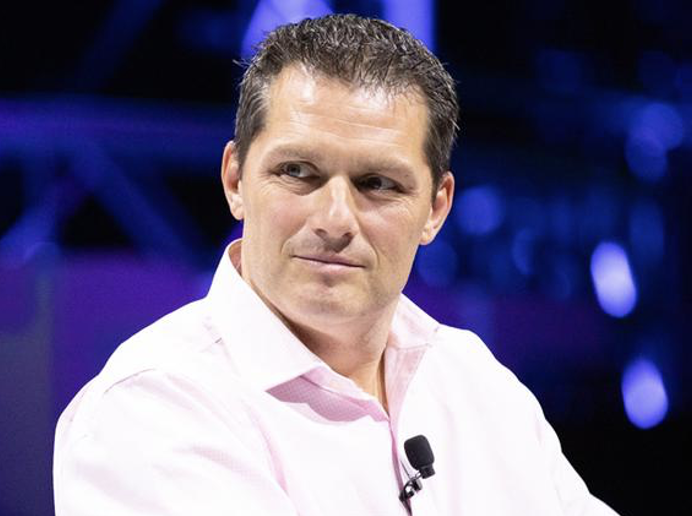Kedar Dani is an angel investor, advisor, and board member to high-growth early stage startups. He previously worked as global vice president of sales for UiPath, a global enterprise software company, following a successful career in sales in business process outsourcing (BPO) at EXL, Capgemini, and Genpact.
In this conversation with Crew Capital’s Dylan Reider and Sonia Damian, Kedar shares sales advice for startups, lessons on recruiting and managing a top salesforce, establishing and overseeing an efficient sales pipeline, and allocating resources within GTM teams.
Highlights from the conversation:
To attract top sales talent from larger companies, founders need to pitch candidates similarly as they would a prospective customer. Sharing a compelling vision gives a candidate confidence in your future, and helps them feel that they are joining as a partner, not just an employee.
At the earliest stages of building, salespeople have to build customer credibility from the bottom up. Management can support their sales teams by putting in place an ‘executive match’ program to help a salesperson know when to bring in their marketing leader, product leader, or the CEO to help close a deal.
To up-sell and grow an account, salespeople should prove the value of the product by bringing the right tools, systems, and resources to bear. This shows they can solve a core problem the client may have, and then identify further opportunities to build a bond with them.
Interview
Sonia Damian: Kedar, thanks for joining us and being open to sharing your insights with the Crew community. In the course of your career, you moved from a corporate environment to a startup one. Why did you make this change and how did you adapt to the startup world?
Kedar Dani: Leaving big companies like Capgemini and making the decision to be a VP of sales for a small startup was a game changer for me. It was a completely different ballgame vs. selling from an established name. When I joined UiPath they were a startup, and we had to convince and educate customers about who we were and why they should be talking to us. The important lesson learned was that I had to challenge, adapt and apply what I had learned in every part of my professional career to fit a new environment of selling as a startup.
Not everyone has the empathy to work in a startup environment. Some people can’t adapt to the ever-changing landscape. It’s very dynamic. But if you understand that this change is a way to keep ahead of the curve, and to develop yourself and your organization, then you have the right mindset to work in a startup.
Dylan Reider: If you were in a founder’s shoes, how would you attract these types of highly empathetic people, that may be a good fit for a startup, to come and work with you?
Kedar Dani: It’s a chicken and egg situation for founders. They want to attract talent, but what attracts talent is big customers, a bold vision, and strong references. But unless you attract the talent you can’t go out and find these references. So, it’s up to the founders to pitch their company to the candidates, in a way that creates a similar excitement for the candidates as it would for an end-customer.
Additionally, founders have to give them a vision of what is going to happen over the next 12 to 24 to 36 months, because anyone joining your company is going to look for some stability and more importantly a path forward, with the potential to have an impact on the company’s journey through the work they do. They need to see this as a partnership. So, being able to answer the question – what’s our goal as we go along?
It also helps if the founder CEOs have had funding from some recognized VCs. VCs can both provide validation that there is adequate funding and support behind a startup, as well as provide access to a network of potential hires.
Sonia Damian: Let’s talk about sales enablement. What does it mean to effectively enable a sales team, and how do you scale it so it becomes a repeatable and easy process?
Kedar Dani: In a startup, you need to fail fast and learn faster. Being conscious of capital, you need to hire and make your people as productive as quickly as possible. That means enabling them to your company, to your way of working and to hit the ground running. They need to be ready with that elevator pitch before the first client call which sometimes comes on day one on the job. On my first day at UiPath, I was in Tokyo presenting at a banking conference, it helped that the flight to Tokyo from London was a long one and I had time to prepare to ensure I delivered a message that was on point.
Onboarding can be one of the most time-consuming activities for a founder in the initial days if they have no support. So, as you start onboarding people, create a knowledge base of the things that you do, and build it up so that it becomes your repository for enabling new people. A very simple example would be to record how you explain your product, how you make the demo or pitch the value proposition, etc. You shouldn’t spend time repeating the same information every time a new person comes in, but you should enable them to do it on their own, providing them with all the necessary materials and being there to answer more complex questions and guide them.
Dylan Reider: Let’s go deeper on that and talk specifically about how leadership teams can best support sales teams.
Kedar Dani: In the early days of a startup, customers should see the founding team behind the salespeople from the get-go. The salespeople are new, the company is new, and the clients may not immediately trust them — so the management team needs to support the reps during the entire process. Customers like to hear founders talk about their story. Secondly, bring in the management team. In a new sales situation, bring in the chief product officer, because that is the person who has developed the product and they are best placed to talk about it. Thirdly, salespeople could even bring in someone from finance or HR as relevant to the function they are selling into, because it will shorten the time to sell dramatically. It is very important to put a good “executive match” program in place. Something that will help the salesperson know exactly when to call their marketing leader, when to call their product leader, and when to bring in their CEO to help them close the deal.
Another step would be creating an efficient and repeatable engine for the smaller deals so your account executives have time to get the ball rolling for large-value deals. Have an inside sales or a business development representative team focus on building a pipeline and “virtually” close some of these smaller deals that come straight out of the box, without too much customization or involvement of on-site visits. That engine could be one or two people in a startup or a full-fledged outsourced approach. These deals are important because they provide you with references, they’re quick and they keep the meter running.
Sonia Damian: From your experience, what do founders and leaders most often struggle with when it comes to sales teams?
Kedar Dani: At times, founders may run into the challenge where they hired salespeople who did well at their previous company but struggle at the new startup. Usually, when this happens the reasons could be that the salespersons may not be able to adapt to the dynamic environment and are used to a lot of support during the sales process or the onboarding wasn’t adequate or the value proposition itself isn’t fully developed. Founders can help by being directly involved with the rep and with the customer, to progress the deal through the stages. Of course, demand gen is also a perennial topic – how to get more leads in the top of funnel – here it is tough to give general advice as so much comes down to the specific product and GTM motion. There are tools that can help you with it, like Sopro, Salesloft, Tactic, or Reachdesk. I strongly believe that every salesperson needs to do a good amount of prospecting themselves and not just rely on leads generated by marketing.
Dylan Reider: How should sales teams think about employing effective up-sell and renewal strategies? How can salespeople upsell without becoming overbearing to customers?
Kedar Dani: This comes down to the relationship and empathy that a salesperson creates with the customer. Early adopters of your technology are extremely important because they have taken the leap of faith in buying from you, and if you don’t give them love, care, and attention, it will not result in growing that account. Also, when talking to a new client you’ve first got to make sure you are able to demonstrate that you’re solving a core problem the customer has. If you can confidently showcase to the customer—by knowing their metrics, their data—that you can solve this now, it is a big step forward toward scaling your deal size. There also needs to be a bond created that leads to a trusted relationship.
To do that requires making sure the customer is successful with your first small implementation. If you fail at that first step, there is no way you’re going to get anything beyond that. So have some level of customer success associated with that account and have a plan in place to ensure that the customer is well engaged. They need to know who the bigger buyers within that customer are—because if they want to upsell from $10,000 to $100,000, that means they have to move their selling from the manager to the VP. It’s a very different strategy from selling your first deal to then scaling the account. It all comes down to the value and who is the buyer in this particular situation.
Sonia Damian: What are the most important things for a founder to take into consideration in getting a client across the threshold?
Kedar Dani: One of my mentors put it into three categories: political, rational, and emotional selling. The political side is that the founder is able to convince the prospect that: “You talking to us is in your own interest because we are also talking to other people in your peer group.” If I go to Barclays Bank and say I am already talking to NatWest or HSBC, that will make them want to talk to me. Rational selling is showing that your product has all the functionality required to solve a customer’s biggest problem. This is your value proposition. And emotional selling is the most important. It’s about touching and feeling the product, if possible. I always tell the sales guys: “Is it possible for the customer to use your product and experience it during the sale?” Because if that is possible, there is no bigger sales tool. People get used to it, and there’s an emotional connection. It’s the salesperson’s job to bring the customer back to the emotional side so that they sign the contract. So that’s the mantra: political, rational, emotional.
Dylan Reider: Are there any other lessons or final words of advice you’d like to share with the startups reading this?
Kedar Dani: Over the years I have worked with many companies, and lots of people, and I’ve tried to take the best from people I looked up to, and incorporate that into my career. I have learned the hard way that it is extremely important to qualify very well each deal you pursue. There were deals that I didn’t qualify hard enough, and I went in and spent six to 12 months pursuing them, spending about £50,000-100,000 of bid budget and finding out that we just couldn’t win this deal because the competition had all the references and we had none.
The second thing I’ve learned is about always understanding the competitive environment. If the customer suddenly stops talking to you when they have said they’re going to sign with you, that is a sure sign that a competitor is talking to them. As a salesperson, if the client tells me that they’re going to sign with me, and then two weeks later I find out that they’ve signed with someone else, that’s my mistake because I didn’t make sure that I followed through and kept the customer engaged. I have been guilty of this early in my sales career. So, these are some of the watch-outs for founders and sales leaders: qualification, engaging the customer, and being aware of your competition.
Sonia Damian: Thank you, Kedar, these were fantastic insights and lessons.
Related Articles

Guy Kirkwood: The Power of the Network in Scaling a Startup
Crew Capital’s Dylan Reider and Sonia Damian recently sat down with Guy, as part of our operator interview series. Our…

Rachit Lohani: Setting the Standard for Employee Recruitment and Retention
We recently sat down with Rachit Lohani, the Chief Technology Officer at Paylocity, a global provider of cloud-based HR and…

Jay McBain: Mastering Market Expansion Through Network Building
Jay McBain recently talked with Crew Capital's Sonia Damian and Dylan Reider to discuss all things channel-related, including early-stage strategy,…








